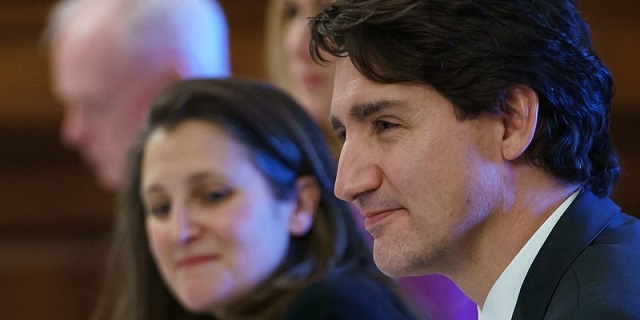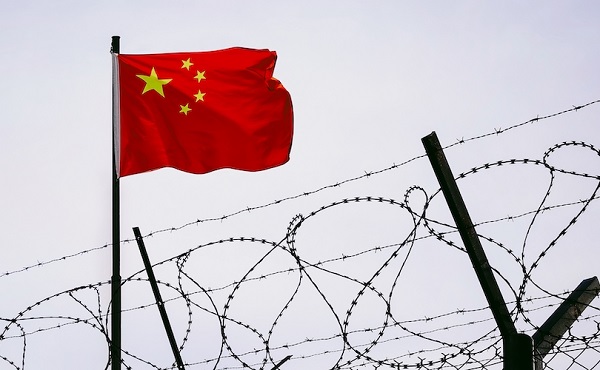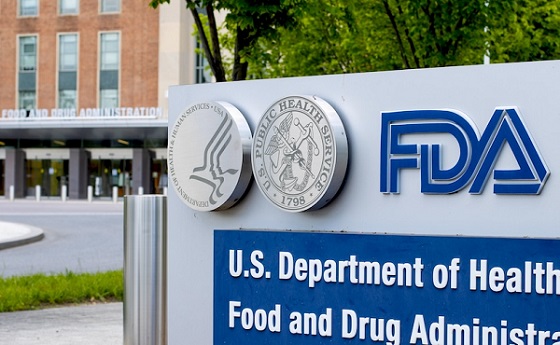Business
Canadians should expect even more spending in federal fall economic statement

From the Fraser Institute
By Jake Fuss and Grady Munro
The Trudeau government will soon release its fall economic statement. Though technically intended to be an update on the fiscal plan in this year’s budget, in recent years the fall economic statement has more closely resembled a “mini-budget” that unveils new (and often significant) spending commitments and initiatives.
Let’s look at the data.
The chart below includes projections of annual federal program spending from a series of federal budgets and updates, beginning with the 2022 budget and ending with the latest 2024 budget. Program spending equals total spending minus debt interest costs, and represents discretionary spending by the federal government.

Clearly, there’s a trend that with every consecutive budget and fiscal update the Trudeau government revises spending estimates upwards. Take the last two fiscal years, 2023/24 and 2024/25, for example. Budget 2022 projected annual program spending of $436.5 billion for the 2023/24 fiscal year. Yet the fall economic statement released just months later revised that spending estimate up to $449.8 billion, and later releases showed even higher spending.
The issue is even more stark when examining spending projections for the current fiscal year. Budget 2022 projected annual spending of $441.6 billion in 2024/25. Since then, every subsequent fiscal release has revised that estimate higher and higher, to the point that Budget 2024 estimates program spending of $483.6 billion for this year—representing a $42.0 billion increase from the projections only two years ago.
Meanwhile, as spending estimates are revised upwards, plans to reduce the federal deficit are consistently pushed off into later years.
For example, the 2022 fall economic statement projected a deficit of $25.4 billion for the 2024/25 fiscal year, and declining deficits in the years to come, before reaching an eventual surplus of $4.5 billion in 2027/28. However, subsequent budgets and fiscal updates again revised those estimates. The latest budget projects a deficit of $39.8 billion in 2024/25 that will decline to a $26.8 billion deficit by 2027/28. In other words, though budgets and fiscal updates have consistently projected declining deficits between 2024/25 and 2027/28, each subsequent document has produced larger deficits throughout the fiscal outlook and pushed the timeline for balanced budgets further into the future.
These data illustrate the Trudeau government’s lack of accountability to its own fiscal plans. Though the unpredictable nature of forecasting means the government is unlikely to exactly meet future projections, it’s still reasonable to expect it will roughly follow its own fiscal plans. However, time and time again Canadians have been sold a certain plan, only to have it change dramatically mere months later due to the government’s unwillingness to restrain spending. We shouldn’t expect the upcoming fall economic statement to be any different.
Authors:
Business
Some Of The Wackiest Things Featured In Rand Paul’s New Report Alleging $1,639,135,969,608 In Gov’t Waste


From the Daily Caller News Foundation
Republican Kentucky Sen. Rand Paul released the latest edition of his annual “Festivus” report Tuesday detailing over $1 trillion in alleged wasteful spending in the U.S. government throughout 2025.
The newly released report found an estimated $1,639,135,969,608 total in government waste over the past year. Paul, a prominent fiscal hawk who serves as the chairman of the Senate Homeland Security and Governmental Affairs Committee, said in a statement that “no matter how much taxpayer money Washington burns through, politicians can’t help but demand more.”
“Fiscal responsibility may not be the most crowded road, but it’s one I’ve walked year after year — and this holiday season will be no different,” Paul continued. “So, before we get to the Feats of Strength, it’s time for my Airing of (Spending) Grievances.”
Dear Readers:
As a nonprofit, we are dependent on the generosity of our readers.
Please consider making a small donation of any amount here.
Thank you!
The 2025 “Festivus” report highlighted a spate of instances of wasteful spending from the federal government, including the Department of Health and Human Services (HHS) spent $1.5 million on an “innovative multilevel strategy” to reduce drug use in “Latinx” communities through celebrity influencer campaigns, and also dished out $1.9 million on a “hybrid mobile phone family intervention” aiming to reduce childhood obesity among Latino families living in Los Angeles County.
The report also mentions that HHS spent more than $40 million on influencers to promote getting vaccinated against COVID-19 for racial and ethnic minority groups.
The State Department doled out $244,252 to Stand for Peace in Islamabad to produce a television cartoon series that teaches children in Pakistan how to combat climate change and also spent $1.5 million to promote American films, television shows and video games abroad, according to the report.
The Department of Veterans Affairs (VA) spent more than $1,079,360 teaching teenage ferrets to binge drink alcohol this year, according to Paul’s report.
The report found that the National Science Foundation (NSF) shelled out $497,200 on a “Video Game Challenge” for kids. The NSF and other federal agencies also paid $14,643,280 to make monkeys play a video game in the style of the “Price Is Right,” the report states.
Paul’s 2024 “Festivus” report similarly featured several instances of wasteful federal government spending, such as a Las Vegas pickleball complex and a cabaret show on ice.
The Trump administration has been attempting to uproot wasteful government spending and reduce the federal workforce this year. The administration’s cuts have shrunk the federal workforce to the smallest level in more than a decade, according to recent economic data.
Festivus is a humorous holiday observed annually on Dec. 23, dating back to a popular 1997 episode of the sitcom “Seinfeld.” Observance of the holiday notably includes an “airing of grievances,” per the “Seinfeld” episode of its origin.
Alberta
A Christmas wish list for health-care reform

From the Fraser Institute
By Nadeem Esmail and Mackenzie Moir
It’s an exciting time in Canadian health-care policy. But even the slew of new reforms in Alberta only go part of the way to using all the policy tools employed by high performing universal health-care systems.
For 2026, for the sake of Canadian patients, let’s hope Alberta stays the path on changes to how hospitals are paid and allowing some private purchases of health care, and that other provinces start to catch up.
While Alberta’s new reforms were welcome news this year, it’s clear Canada’s health-care system continued to struggle. Canadians were reminded by our annual comparison of health care systems that they pay for one of the developed world’s most expensive universal health-care systems, yet have some of the fewest physicians and hospital beds, while waiting in some of the longest queues.
And speaking of queues, wait times across Canada for non-emergency care reached the second-highest level ever measured at 28.6 weeks from general practitioner referral to actual treatment. That’s more than triple the wait of the early 1990s despite decades of government promises and spending commitments. Other work found that at least 23,746 patients died while waiting for care, and nearly 1.3 million Canadians left our overcrowded emergency rooms without being treated.
At least one province has shown a genuine willingness to do something about these problems.
The Smith government in Alberta announced early in the year that it would move towards paying hospitals per-patient treated as opposed to a fixed annual budget, a policy approach that Quebec has been working on for years. Albertans will also soon be able purchase, at least in a limited way, some diagnostic and surgical services for themselves, which is again already possible in Quebec. Alberta has also gone a step further by allowing physicians to work in both public and private settings.
While controversial in Canada, these approaches simply mirror what is being done in all of the developed world’s top-performing universal health-care systems. Australia, the Netherlands, Germany and Switzerland all pay their hospitals per patient treated, and allow patients the opportunity to purchase care privately if they wish. They all also have better and faster universally accessible health care than Canada’s provinces provide, while spending a little more (Switzerland) or less (Australia, Germany, the Netherlands) than we do.
While these reforms are clearly a step in the right direction, there’s more to be done.
Even if we include Alberta’s reforms, these countries still do some very important things differently.
Critically, all of these countries expect patients to pay a small amount for their universally accessible services. The reasoning is straightforward: we all spend our own money more carefully than we spend someone else’s, and patients will make more informed decisions about when and where it’s best to access the health-care system when they have to pay a little out of pocket.
The evidence around this policy is clear—with appropriate safeguards to protect the very ill and exemptions for lower-income and other vulnerable populations, the demand for outpatient healthcare services falls, reducing delays and freeing up resources for others.
Charging patients even small amounts for care would of course violate the Canada Health Act, but it would also emulate the approach of 100 per cent of the developed world’s top-performing health-care systems. In this case, violating outdated federal policy means better universal health care for Canadians.
These top-performing countries also see the private sector and innovative entrepreneurs as partners in delivering universal health care. A relationship that is far different from the limited individual contracts some provinces have with private clinics and surgical centres to provide care in Canada. In these other countries, even full-service hospitals are operated by private providers. Importantly, partnering with innovative private providers, even hospitals, to deliver universal health care does not violate the Canada Health Act.
So, while Alberta has made strides this past year moving towards the well-established higher performance policy approach followed elsewhere, the Smith government remains at least a couple steps short of truly adopting a more Australian or European approach for health care. And other provinces have yet to even get to where Alberta will soon be.
Let’s hope in 2026 that Alberta keeps moving towards a truly world class universal health-care experience for patients, and that the other provinces catch up.
-

 International2 days ago
International2 days agoGeorgia county admits illegally certifying 315k ballots in 2020 presidential election
-

 International2 days ago
International2 days agoCommunist China arrests hundreds of Christians just days before Christmas
-

 Business1 day ago
Business1 day agoSome Of The Wackiest Things Featured In Rand Paul’s New Report Alleging $1,639,135,969,608 In Gov’t Waste
-

 Energy20 hours ago
Energy20 hours agoThe Top News Stories That Shaped Canadian Energy in 2025 and Will Continue to Shape Canadian Energy in 2026
-

 Alberta2 days ago
Alberta2 days agoCalgary’s new city council votes to ban foreign flags at government buildings
-

 Business2 days ago
Business2 days agoWarning Canada: China’s Economic Miracle Was Built on Mass Displacement
-

 International19 hours ago
International19 hours ago$2.6 million raised for man who wrestled shotgun from Bondi Beach terrorist
-

 Alberta2 days ago
Alberta2 days agoWhat are the odds of a pipeline through the American Pacific Northwest



